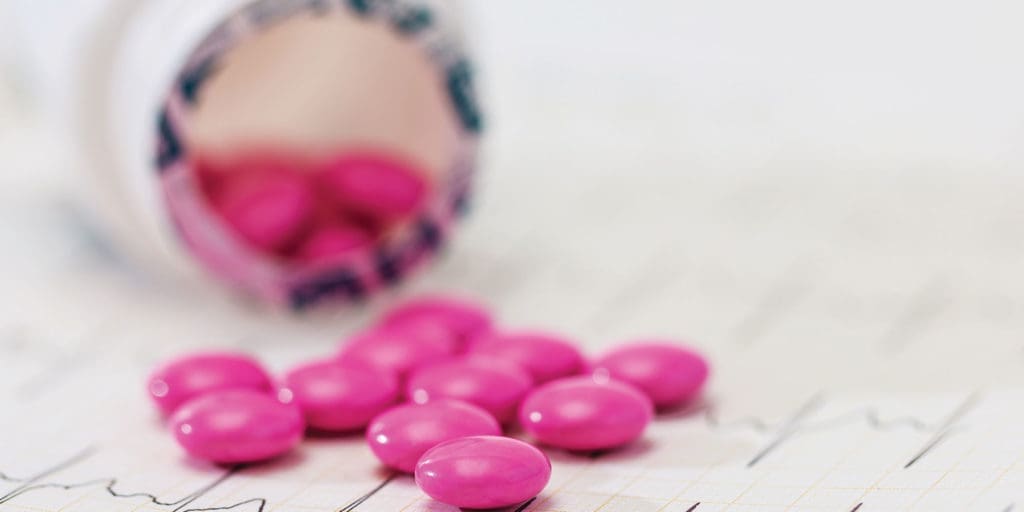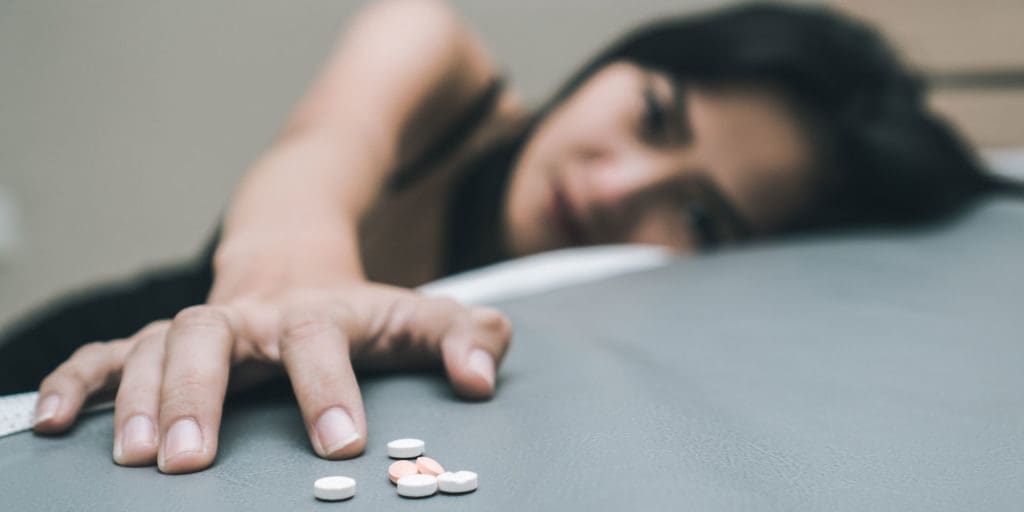According to the National Institute on Drug Abuse, over 130 people die every day from opioid overdose; moreover, the economic burden of opioid abuse nationwide is over $78 billion. This public health crisis is having a major impact on individuals and citizens across the United States, but not all Americans are aware of it.
Opioid abuse and pain pill addiction are devastating afflictions that severely impact the lives of addicts, their families, and extended communities. Even though pain pill addiction can be debilitating, there are still resources that can help those dealing with this condition.
What Is Pain Pill Addiction?
Pain pill addiction is an often misunderstood health issue, as people frequently associate addiction or drug abuse primarily with narcotics or alcohol. Additionally, addiction to pain pills or similar substances may have developed without a person initially seeking to use the drug. This can happen when it is prescribed to them for their recuperation from some sort of illness or ailment.
Still, pain pill addiction is a serious issue, and it is important to fully understand its scope, severity, and the effects it can have on individuals and society.
“prescription drug abuse is the use of prescription medication in a way not intended by the prescribing doctor.”
Pain Pill Addiction Symptoms and Causes
 Pain pill addiction occurs when an individual develops an addiction to medication — including opioids — that is intended to treat pain and other symptoms. Some opioids, like heroin, are illegal. Others, like Oxycontin and Vicodin, may be prescribed to individuals who are facing severe pain. According to the American Society of Anesthesiologists, opioids “are used by people with chronic headaches and backaches, by patients recovering from surgery or experiencing severe pain associated with cancer, and by adults and children who have gotten hurt playing sports or who have been seriously injured in falls, auto accidents or other incidents.”
Pain pill addiction occurs when an individual develops an addiction to medication — including opioids — that is intended to treat pain and other symptoms. Some opioids, like heroin, are illegal. Others, like Oxycontin and Vicodin, may be prescribed to individuals who are facing severe pain. According to the American Society of Anesthesiologists, opioids “are used by people with chronic headaches and backaches, by patients recovering from surgery or experiencing severe pain associated with cancer, and by adults and children who have gotten hurt playing sports or who have been seriously injured in falls, auto accidents or other incidents.”
One major factor contributing to pain pill addiction is prescription drug abuse. The Mayo Clinic states that “prescription drug abuse is the use of prescription medication in a way not intended by the prescribing doctor.” Examples can include a patient taking a higher dose or higher frequency of their prescribed medication than what their physician recommended, or requesting unnecessary refills for pain medication.
Underlying Causes
Opioids themselves can be highly addictive, and there may be risks of addiction for those using such medicines over an extended period of time. For example, an individual who has undergone spinal fusion surgery may be prescribed an opioid to help alleviate their pain symptoms. Because the recovery process can take several months, and pain medication is usually prescribed for the entire recovery period, a patient may be at risk of becoming addicted. That same patient could also be prescribed an opioid at an earlier stage in their recovery, have difficulty managing their pain levels, and seek further opioid use as a result.
According to the U.S. National Library of Medicine, “opioids change the chemistry of the brain and lead to drug tolerance, which means that over time the dose needs to be increased to achieve the same effect. Taking opioids over a long period of time produces dependence, such that when people stop taking the drug, they have physical and psychological symptoms of withdrawal (such as muscle cramping, diarrhea, and anxiety).”
Groups Most Susceptible
One of the reasons that pain pill addiction affects so many people is that they are easily accessible. For example, Vicodin is a potentially addictive drug. It’s also often prescribed to individuals who may be facing high levels of pain. Those individuals can become addicted and face negative health outcomes, despite the drug being legal.
“The number of prescriptions for some of these medications has increased dramatically since the early 1990s,” according to the National Institute on Drug Abuse. The institute also notes that prescription drug misuse is highest among 18- to 25-year-old men. While not meant to alleviate pain, Adderall is also another commonly misused drug. A report from the Johns Hopkins Bloomberg School of Public Health notes that misuse of the drug has been rising among 18- to 25-year-olds. This type of misuse can include individuals who have been prescribed the medication and then sell pills to those without a prescription.
Pain pill overdose also severely impacts women and other populations. According to the Centers for Disease Control and Prevention (CDC), the rate of opioid deaths for women in 2017 was 4.2 per 100,000. The CDC also noted that overdose rates were high among individuals older than 65, as well as non-Hispanic whites and American Indian/Alaskan Natives, compared to other populations.
Because pain pills and opioids can be prescribed to individuals who haven’t experienced addictions with any other drugs or substances, anyone can be at risk of pain pill addiction.
Symptoms and Ailments
Long-lasting, symptomatic, and/or extreme pain can be cause for receiving an opioid prescription. As for the specific symptoms of pain pill addiction itself, the American Society of Anesthesiologists notes that behaviors of an addicted individual may include associating with new or different groups of individuals, being overly energetic or nervous, and changing sleep or dietary habits.
It should be noted that specific addiction symptoms do not manifest themselves in the same way for every patient. They vary from person to person, even when the pain condition may be the same.
Those worried that their friend or loved one may be suffering from a pain pill addiction should be aware of changes in the person’s specific behavior, keeping in mind the larger symptoms that are often associated with the condition.
Treatment and Recovery from Pain Pill Addiction


Treatment Centers and Clinics
There are numerous treatment centers and clinics where individuals facing opioid addiction or abusing prescription drugs can receive treatment. It is important to remember that all cases of pain pill addiction are not the same. Some may be more or less severe, resulting in different types of treatment.
The Hazelden Betty Ford Foundation notes that treatment itself for conditions like pain pill addiction can include a variety of items and strategies, including nutritional planning, mental health services, and medical detox. Types of rehabilitation and facilities themselves, according to the foundation, can include inpatient clinics that are staffed around the clock; day treatment, where an individual receives treatment throughout the week; intensive outpatient programs, where a person receives an extensive amount of care and programming; and continuing care, which can just be for a few hours each week.
These types of treatments and facilities may be covered by health insurance. The U.S. Department of Health and Human Services offers resources and information that can help individuals learn whether or how much their insurance may cover the treatment.
Counseling and Mental Health


A booklet provided by the American Society of Addiction Medicine (ASAM) notes that counseling should be performed by a qualified health professional, and can take place in or beyond a specific center where a person is receiving medication and treatment. The process of counseling itself can help an individual facing addiction understand underlying causes or factors contributing to their condition, such as low self-worth, difficult life situations, and negative peer groups, ASAM notes.
Helplines, Online Resources, and Support Groups
The national helpline for SAMSHA is 1-800-662-HELP (4357). Individuals who call this number can receive 24/7 information regarding treatment referrals for pain pill addiction and other ailments. “This service provides referrals to local treatment facilities, support groups, and community-based organizations. Callers can also order free publications and other information,” according to SAMSHA.
- The National Drug Helpline also provides similar information and resources to those who are struggling with addiction. The helpline is available 24/7 and the number is 1-844-289-0879.
- Narcotics Anonymous provides meetings and services to those who may be facing addiction.
- The National Institute on Drug Abuse provides extensive links to organizations and resources that can help those who are facing addiction.
- PublicHealth.org offers open access to journals and learning materials regarding addiction, as well as links to professional and research organizations that are studying the issue.
- The American Academy of Addiction Psychiatry also provides links to several resources that can help individuals facing addiction, as well as their friends and families.
Staying Addiction Free
The Gateway Foundation, an organization that provides treatment centers to those struggling with drug or alcohol addiction, notes how setting and achieving short-term goals, removing toxic relationships, and establishing a strong peer support system are all effective strategies in helping former addicts stay drug-free. “Joining and becoming engaged in a recovery community is beneficial as well, as it allows relationships to develop between people who have shared experiences and understand each other,” the Gateway Foundation notes.
Similar to how the specific symptoms of an addicted individual may vary, so may the best options to help overcome the addiction. For those who are suffering from pain pill and other addictions, as well as their friends and families, it’s important to consider the full range of potential services and resources that are available to help build addiction-free futures.




